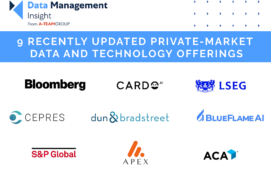
Harbr is taking a new approach to data value with an enterprise data exchange that can be used to democratise internal data, enrich a data ecosystem by adding external data, or monetise data by building a marketplace that provides insight into numerous data products.
The London-based company was founded in 2017 to address the problem of data value chains being slow, rigid and costly. Anthony Cosgrove, co-founder and chief strategy officer at Harbr, says: “A single thread data supply chain is a slow delivery mechanism and can’t be used to deliver different data to the business. We took a consumer-centric approach and asked what consumers wants. Typically, the answer is not data, but data products curated for them.”
Harbr Enterprise Data Exchange does exactly this, providing distributed data ownership that allows all roles to build data products without recourse to IT. It also facilitates collaboration on data products between internal and external stakeholders with collaborators sharing the results of their efforts as custom data products on the exchange.
Cosgrove says: “Collaboration means users can get hands-on with data in the same environment and work together to see, perhaps, if particular data is useful, how to join up data, or filter it to make it more precise.”
Use cases of the data exchange cover both enterprise and commercial objectives. Used internally, the exchange can democratise data to provide a single and governed source of trusted data. Used as an extended data ecosystem, the exchange can share data with external organisations such as customers and suppliers. Data from other organisations is consumed once and optimised for the exchange user, the whole managed with controls including data licences, audit, and the ability to set up data subscriptions.
The key commercial use case of the data exchange is data monetisation, where the platform is used as a base for building a branded data marketplace. Early commercial solutions include Moody’s DataHub, which integrates data from across the company to provide data scientists and analysts a single location to access, analyse, model and consume billions of data points. Moody’s started with 12 datasets on the platform, including Bureau van Dijk’s Orbis database and ESG data from the company’s ESG Solutions Group.
Other capital markets users of the Harbr solution include two large data vendors using the exchange to comingle data to create new products for their customers.
Cosgrove says: “We provide software, that’s it. There are licence templates and terms and conditions in the platform for users that create products, but we don’t touch the data. What we do is help customers improve efficiency, gain more insight into data, build new business models, decrease the cost of acquiring data, and reduce risk.”
The Harbr Enterprise Data Exchange platform is cloud native and can be deployed in a dedicated Amazon or Google virtual private cloud, where it is updated and maintained by Harbr, or as a SaaS solution in which customer data resides in a virtual private cloud, the Harbr software resides in a Harbr virtual private cloud, and the two are paired to offer software updates without moving data.
The platform is preconfigured with a number of data science tools including Anaconda, Hadoop, Hue, R Studio, Spark and Zeppelin, and includes end point integrations for data import and export such as Amazon Web Services S3, Google Cloud Storage, Microsoft Azure Blob Storage, and SFTP.
To date, Harbr has about 40 customers and over 60 employees in six countries. It has raised total funding of $52 million including seed funding and most recently, in November 2020, $38.5 million Series A funding in a round co-led by Dawn Capital and Tiger Global Management, and including previous investors. Harbr will use the investment to scale its team so it can onboard new enterprise customers at an accelerated rate. It plans to triple its number of employees this year, with customer growth, sales and marketing centred in the the US, while the UK remains the base for engineering and R&D investment.
Subscribe to our newsletter




